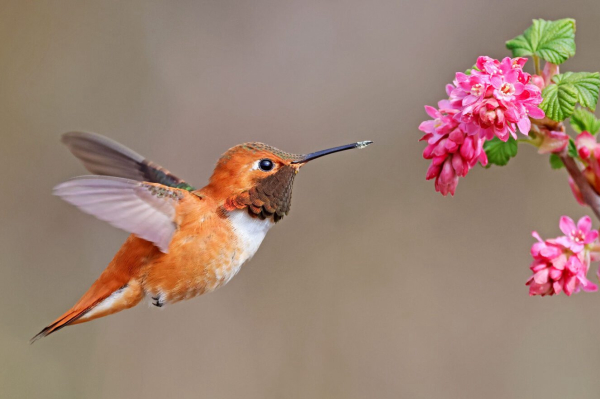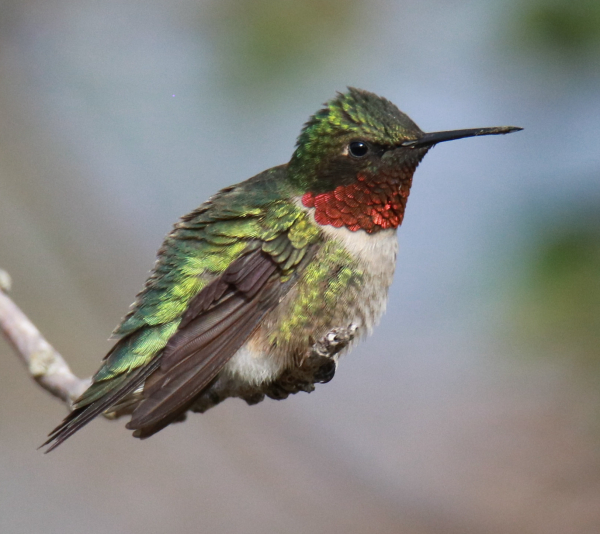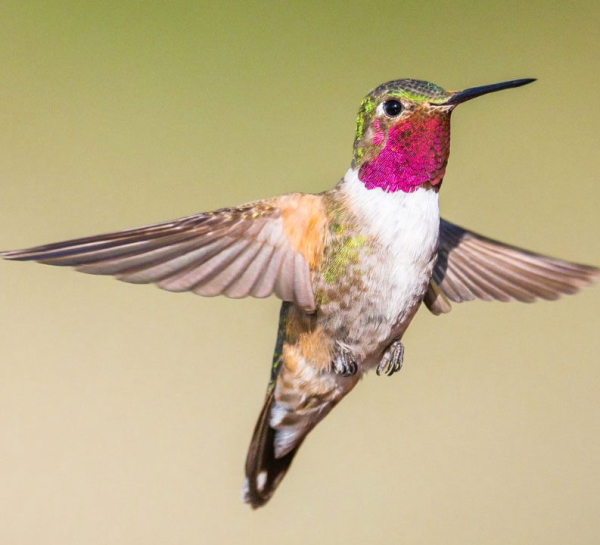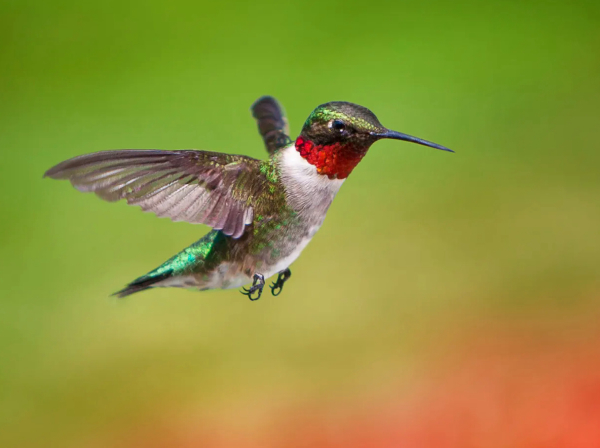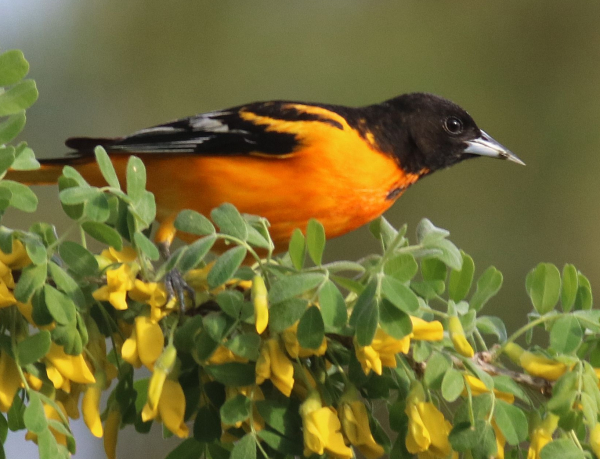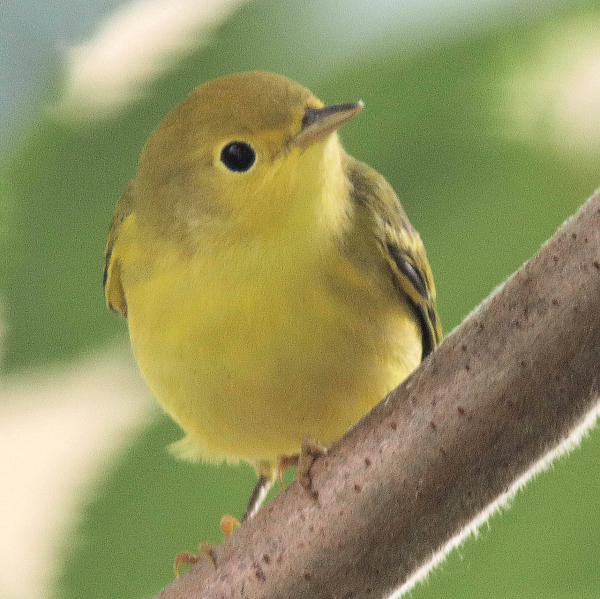Rare Hummingbird Seen Again

The rediscovery of the Santa Marta Sabrewing is being celebrated by birders, ornithologists, and conservationists around the world. An experienced local birder in Colombia found and documented a male Santa Marta Sabrewing, a relatively large hummingbird only found in Colombia’s Sierra Nevada de Santa Marta mountains. It’s only the second time the species has been documented since it was first described in 1946; the last sighting was in 2010, when researchers were able to take the first-ever photos of the species in the wild.
The male hummingbird was instantly recognizable by its emerald-green feathers, bright iridescent-blue throat, and slightly curved black bill. It was perched on a branch, vocalizing and singing, which is usually associated with defending a territory and potentially pairing behavior. However, Vega did not see any other hummingbirds in the area, though there have been sporadic reports of Santa Marta Sabrewing sightings during the past decade by other local birders. Santa Marta Sabrewings are only known to be found in the Sierra Nevada de Santa Marta and the species is listed as Critically Endangered on the IUCN (International Union for Conservation of Nature) Red List of Threatened Species, though it was historically considered common in the southeast portion of the mountains.
“This rediscovery is tremendous, and it makes me hopeful that we will start to better understand this mysterious and threatened bird,” said Esteban Botero-Delgadillo, Director of Conservation Science with SELVA: Research for Conservation in the Neotropics. “However, we found it in an area that is unprotected, which means that it is critically important for conservationists, local communities, and government institutions to work together to learn more about the hummingbirds and protect them and their habitat before it’s too late.” Much of the forest in the Santa Marta Mountains has been cleared for agriculture, and scientists estimate that only 15 percent remains.
Biologists know very little about the Santa Marta Sabrewing, except that it typically lives in humid neotropical forests at mid-elevations between 4,000 and 6,000 feet. Ornithologists believe this rare species of hummingbird may migrate to higher elevations during the rainy season in search of flowering plants in the paramo, a region of grass and shrubs.
“Technology has made it much easier to gain and share knowledge about the Sierra Nevada de Santa Marta and its inhabitants,” said Diego Zarrate, Director of Conservation with ProCAT Colombia. “This is a great example of what we can learn about the biodiversity of this area when local communities and conservationists work together.”
“It’s so incredible to see photos and video of the Santa Marta Sabrewing,” said John Mittermeier, Director of Threatened Species Outreach at the American Bird Conservancy. “It’s like seeing a phantom. When we announced the Top 10 most wanted lost birds last year, we hoped that it would inspire birders to look for these species. And as this rediscovery shows, sometimes ‘lost’ species re-emerge when we least expect it. Hopefully, rediscoveries like this will inspire conservation action.”
“The Sierra Nevada de Santa Marta is so incredibly biodiverse and harbors so many amazing endemic species. It’s hugely exciting to have proof that the Santa Marta Sabrewing is still living in the mountains. We still have time to save it,” exclaimed Lina Valencia, Andean Countries Coordinator for Re:wild.
For more information and to refer to the original American Bird Conservancy article, see Rare Singing, Emerald-Green and Iridescent-Blue Hummingbird Unexpectedly Rediscovered in Colombia – American Bird Conservancy (abcbirds.org)


